| Vintage Pulp | Jun 8 2014 |

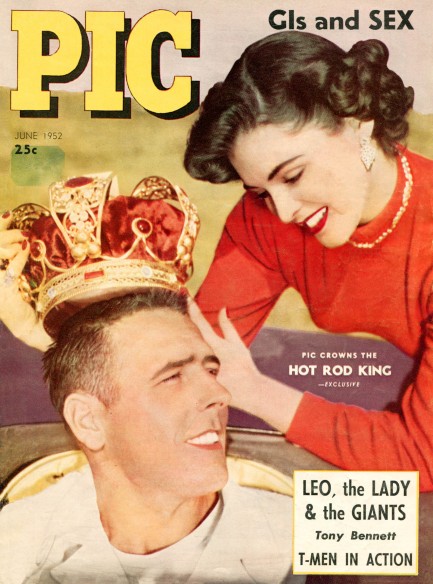
We’ve featured Pic magazine only once before, but not because it was an unimportant publication. Quite the opposite—we’ve seen issues as early as 1936 and as late as 1958, making it both a Depression and World War II survivor, presumably no easy feat and certainly a run indicative of sustained popularity. Early issues seemed focused on sports, but it soon broadened to include celebrities. It was launched by Wagner Publications of New York City, and this issue appeared in June 1952 with a cover featuring actress Suzan Ball placing a crown on the head of Akton Miller, a man Pic had chosen as its Hot Rod King. Inside you get a raft of Hollywood stars, including photos of Yvonne De Carlo in Uruguay, Marilyn Monroe, Janet Leigh, and Joan Vohs, shots of New York Giants manager Leo Durocher and his beautiful actress wife Laraine Day, and some nice boxing pictures. There’s also an interesting feature on the day’s top vocalists (with African-Americans notably excluded), and a profile of crooner Tony Bennett.
It was then that her train to stardom jumped the tracks. She injured her leg performing a dance number in East of Sumatra, and later in the year had a car accident and hurt the leg again. Treatment for those two injuries led to the discovery of a cancerous tumor. Soon afterward she fell and broke the limb, and when doctors decided they couldn’t remove the tumor they instead took the entire the leg. That was in January 1954. Ball soldiered on in her show business career with an artificial leg, starring in Chief Crazy Horse, though she lost fifteen pounds during the production, and later playing nightclub dates and appearing on television shows. In July 1955 she collapsed while rehearsing for the show Climax, whereupon doctors discovered the cancer had metastasized and spread to her lungs. A month later she died at age twenty-one. We have about fifty scans below.
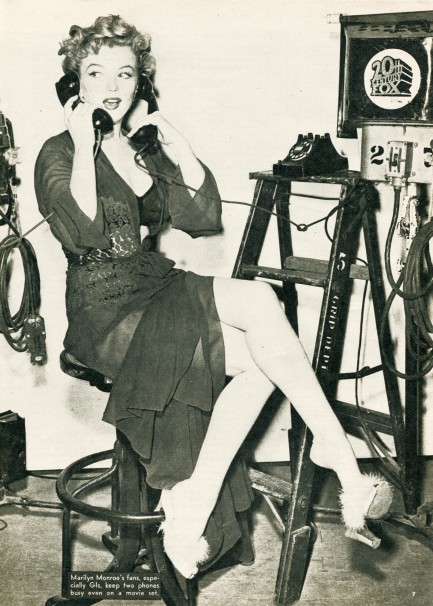
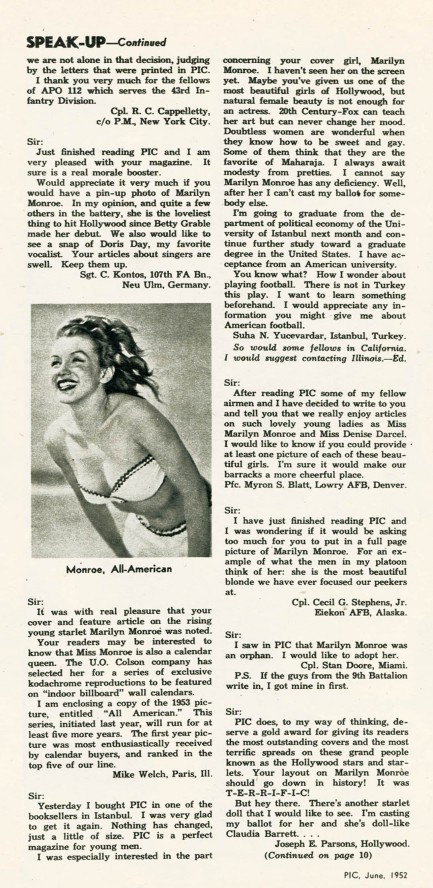
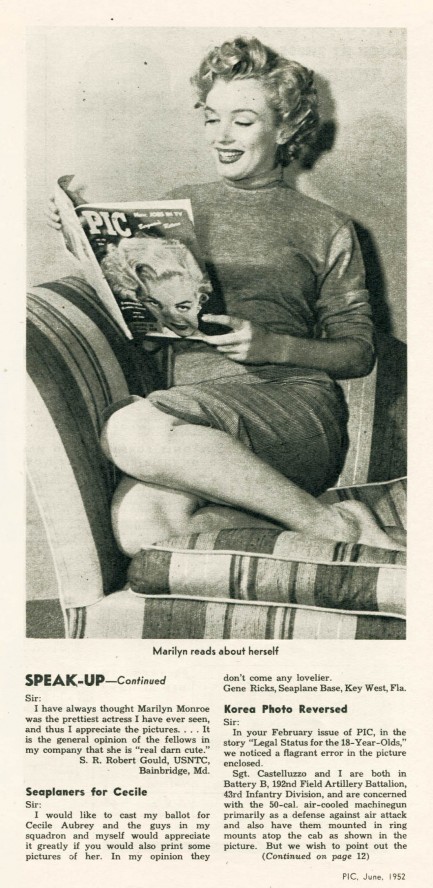
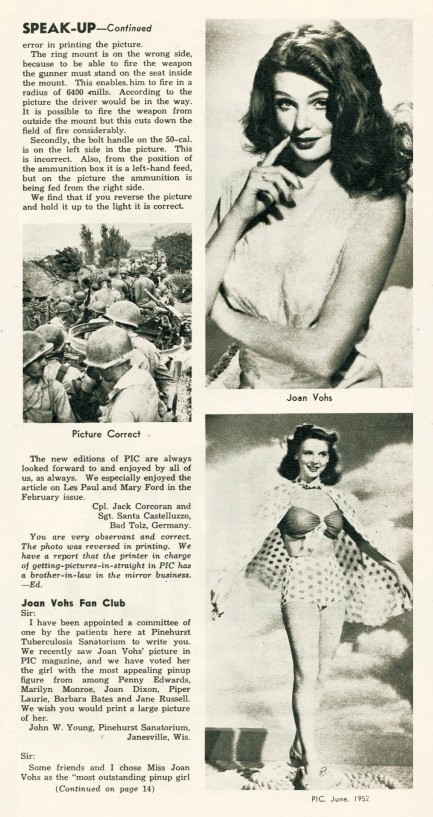
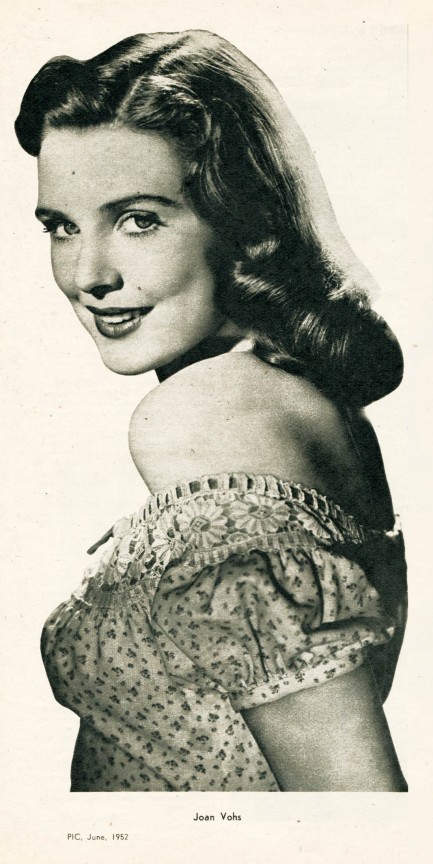
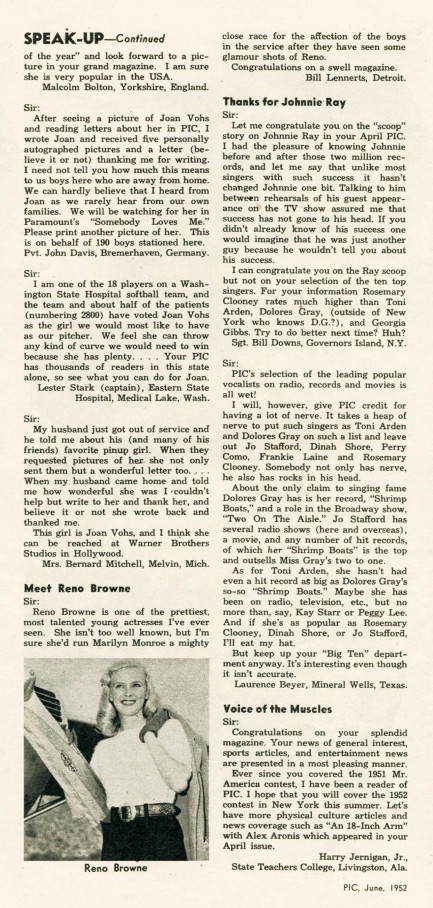
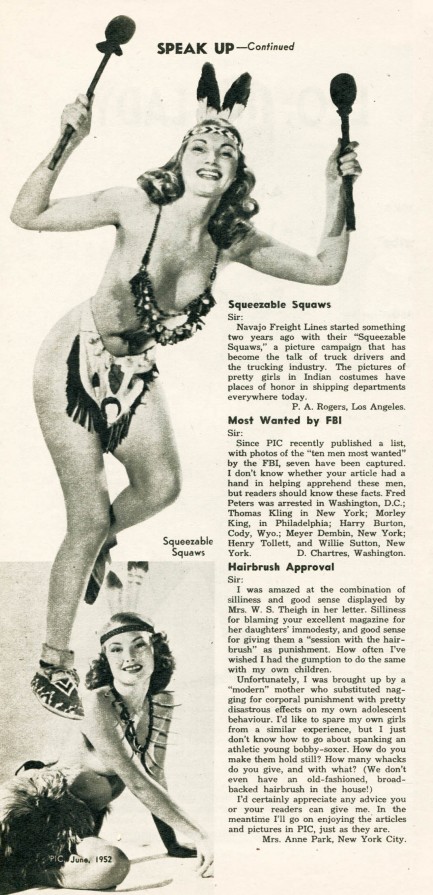
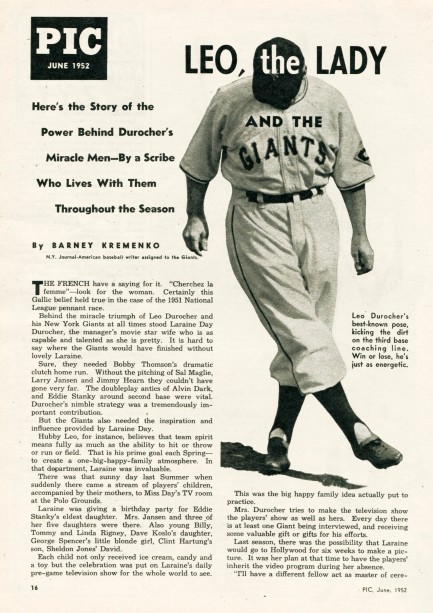
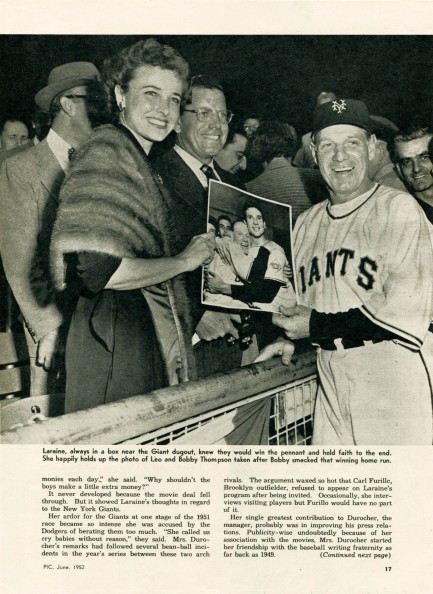
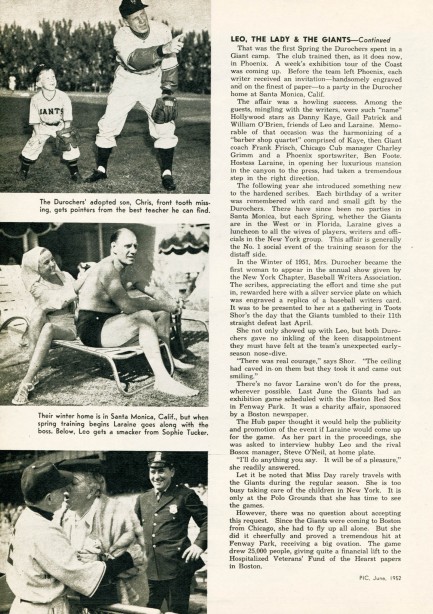
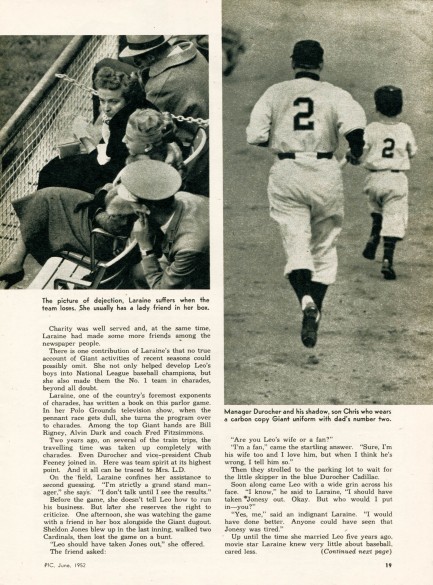
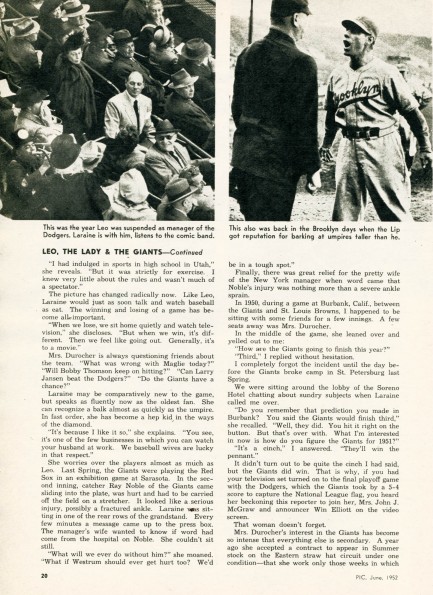
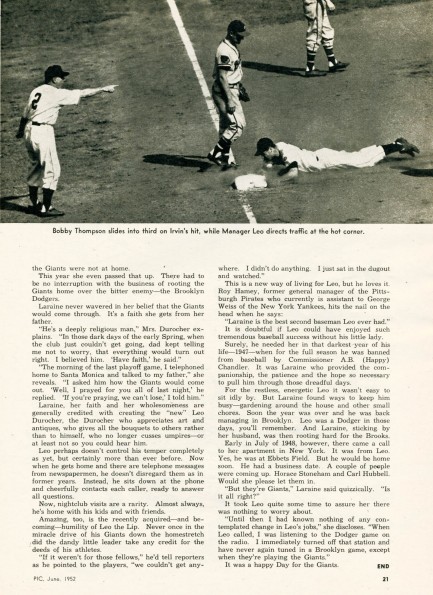
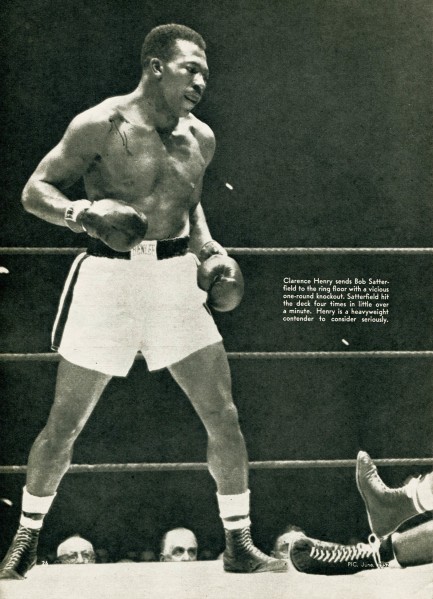
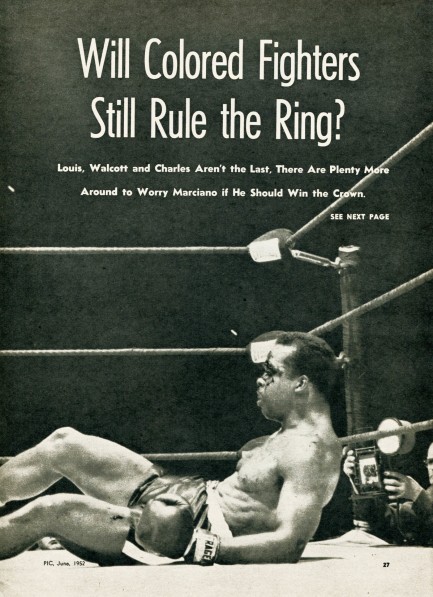
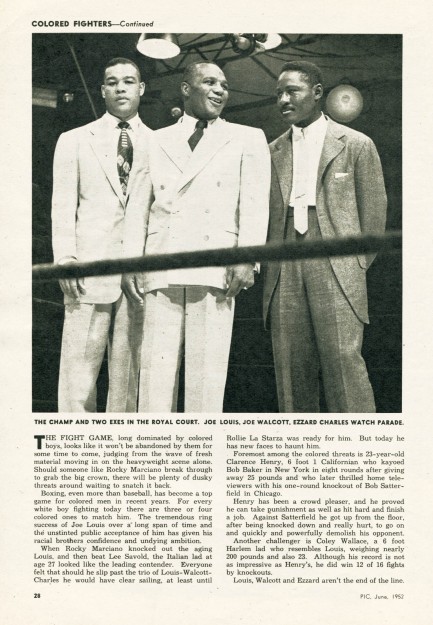
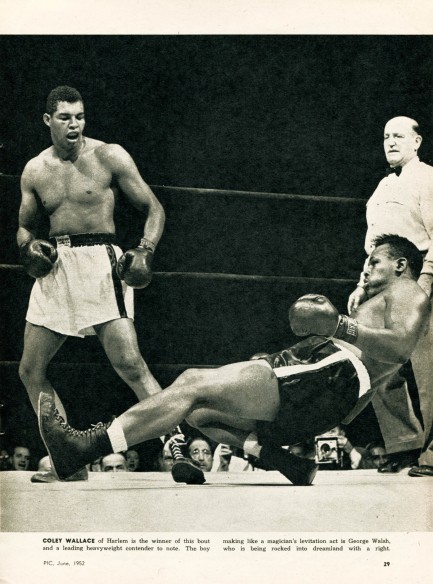
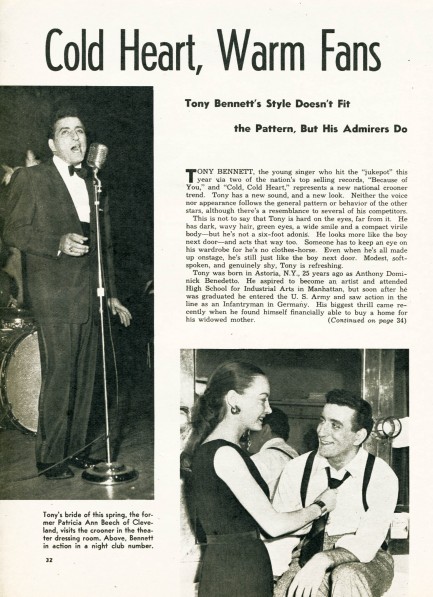
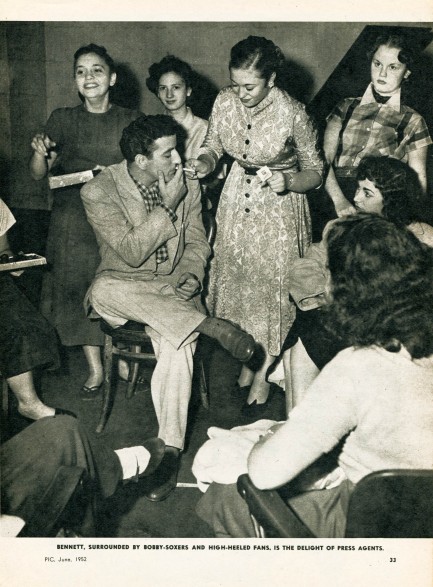
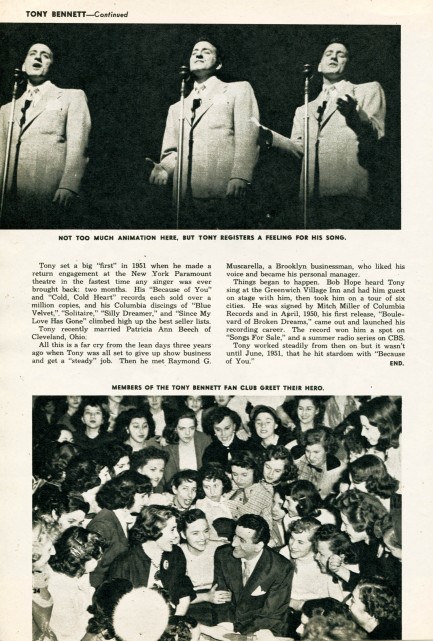
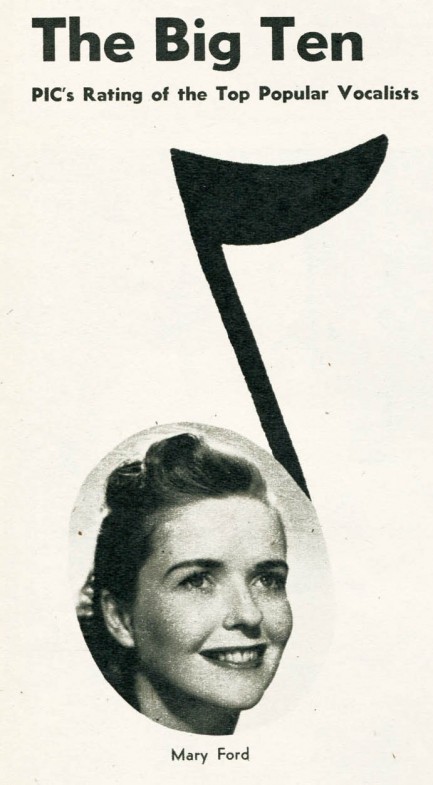
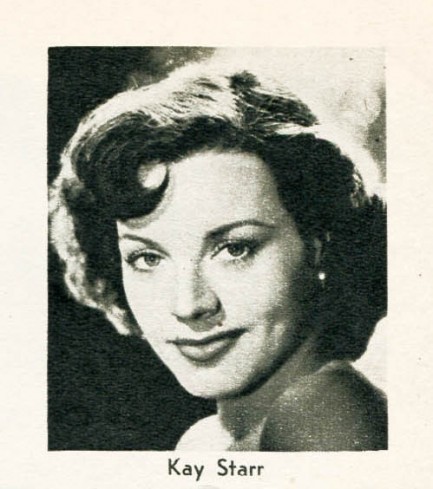
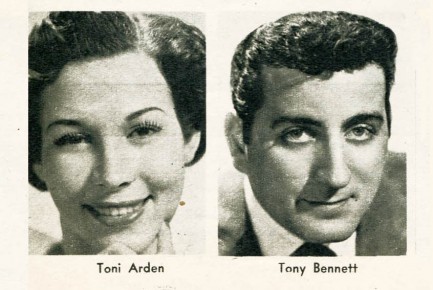
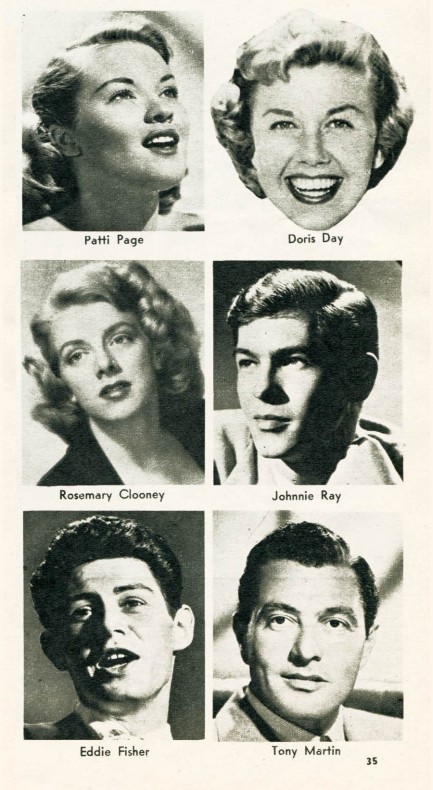
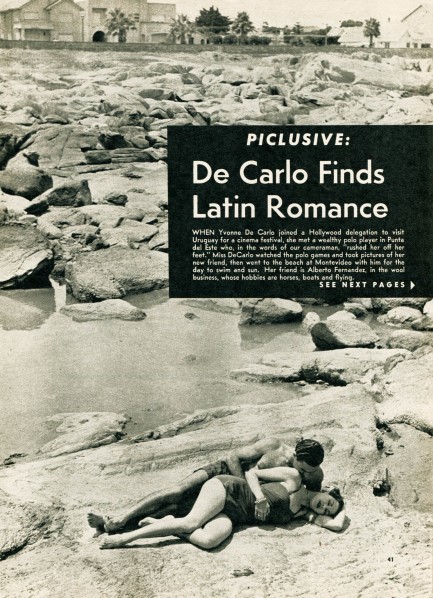
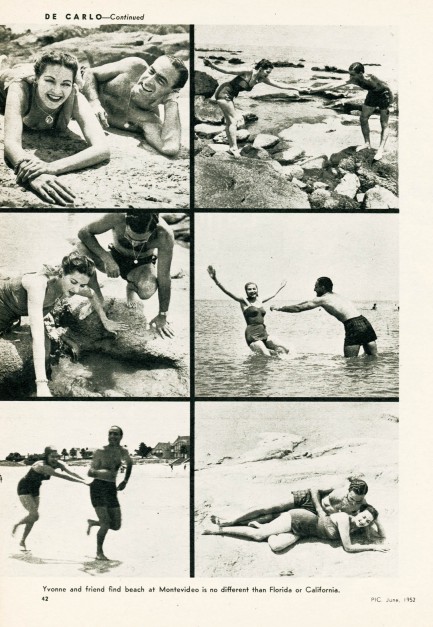
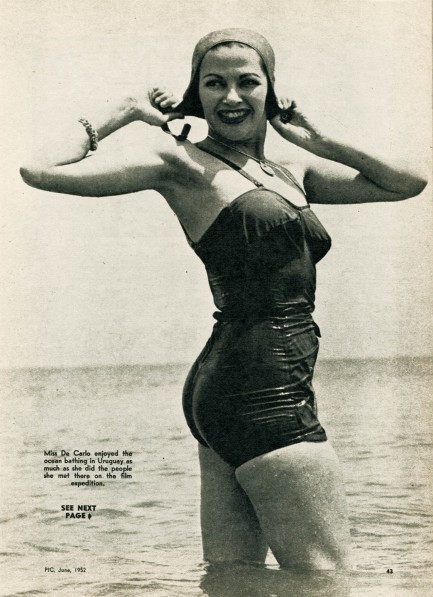
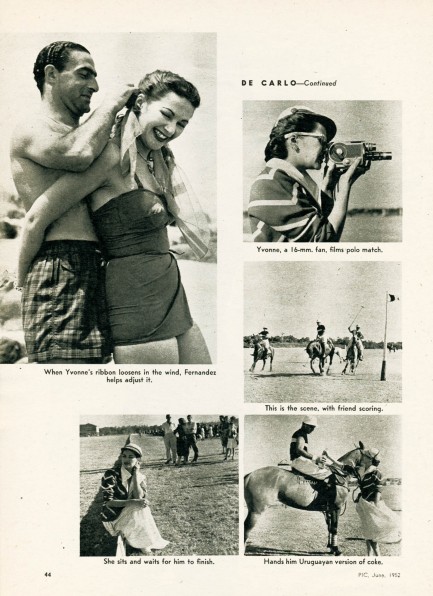
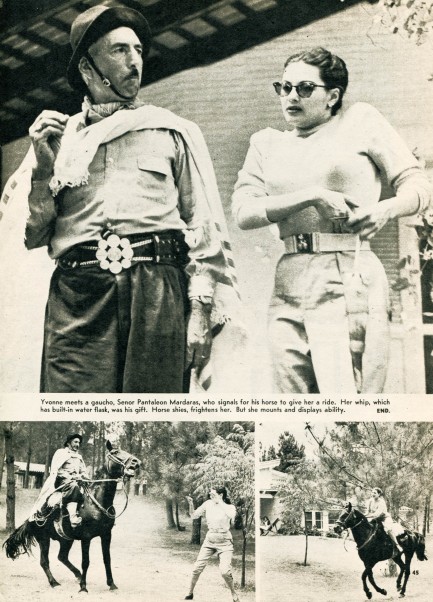
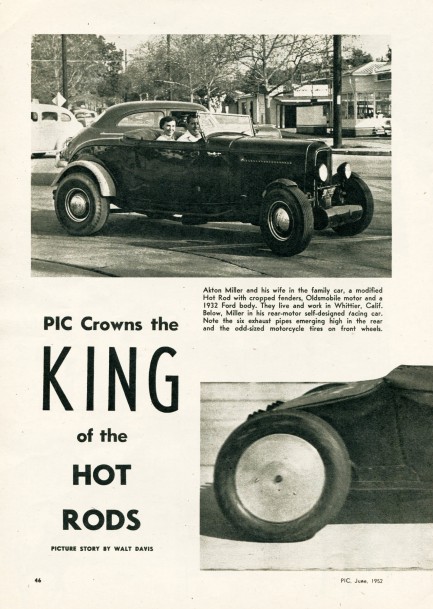
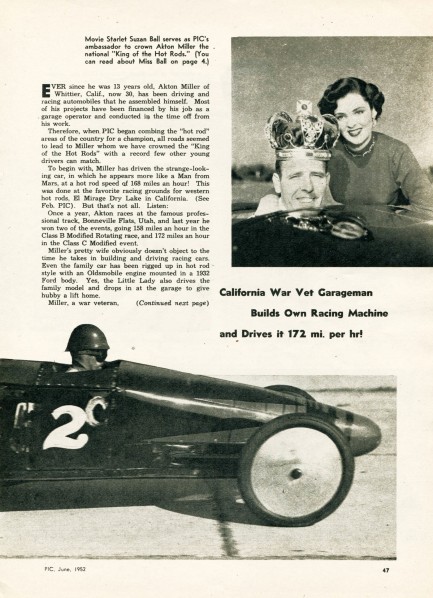
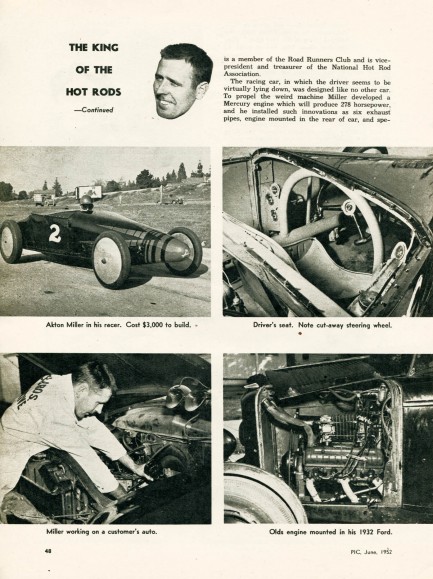
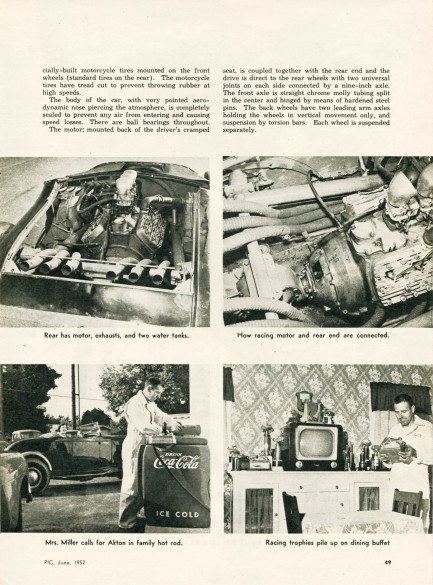
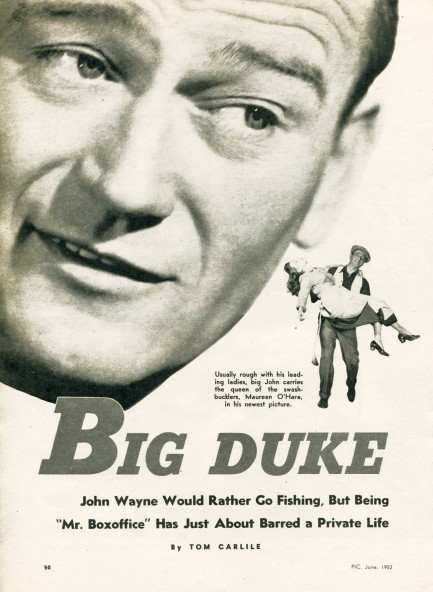
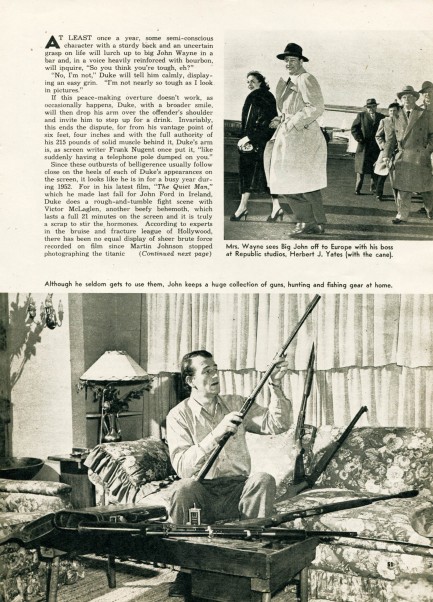
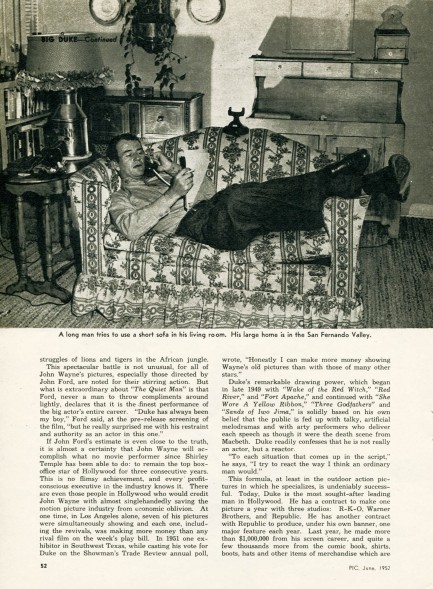
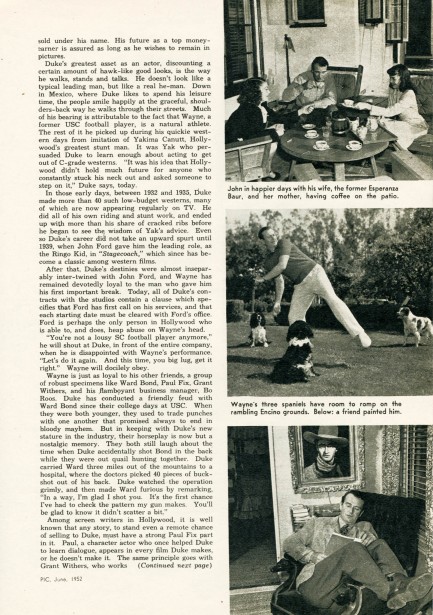
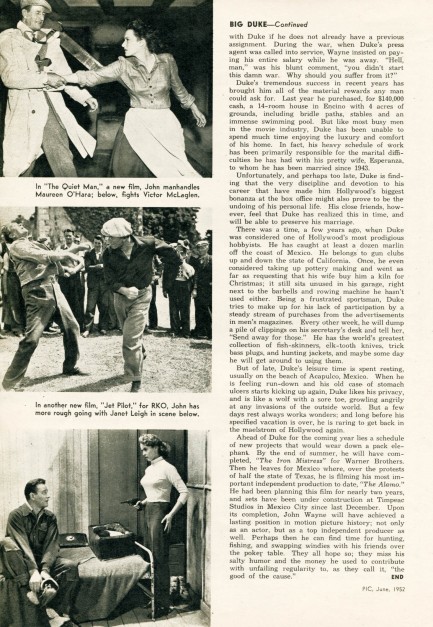
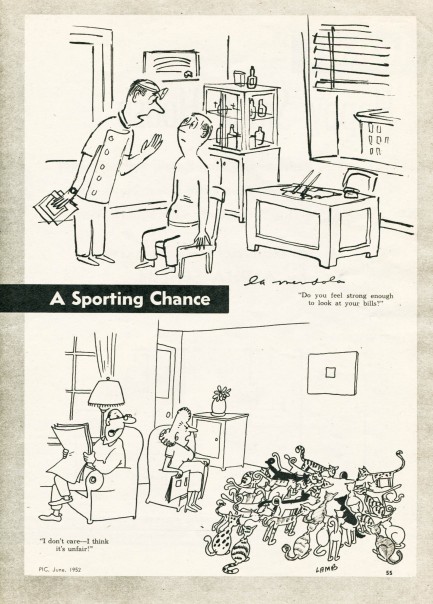
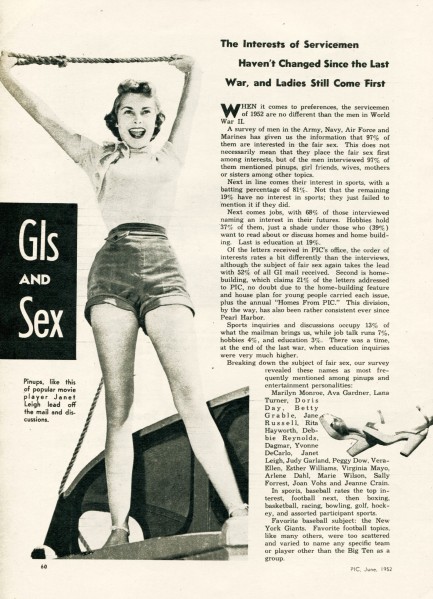
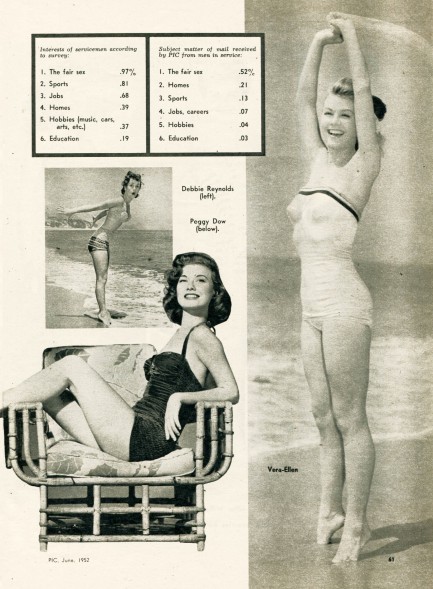
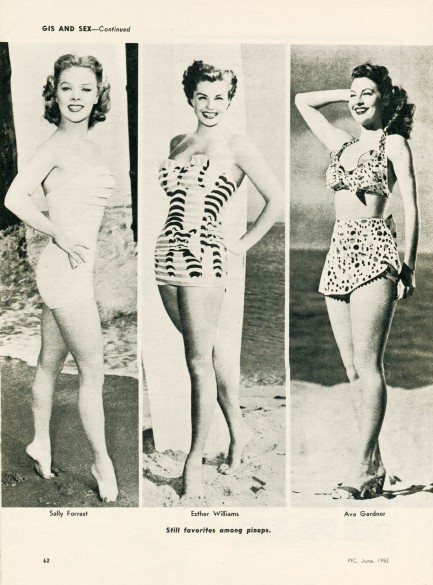
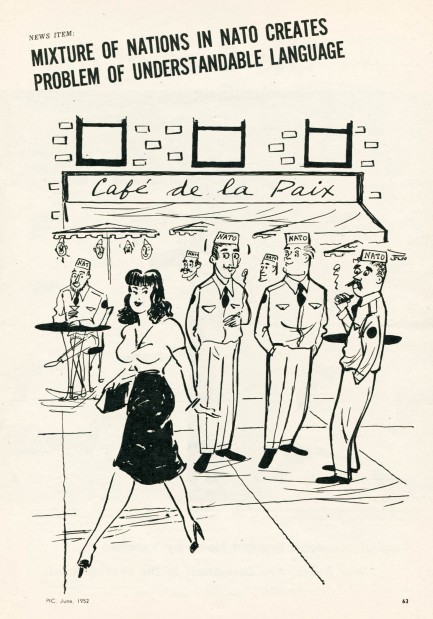
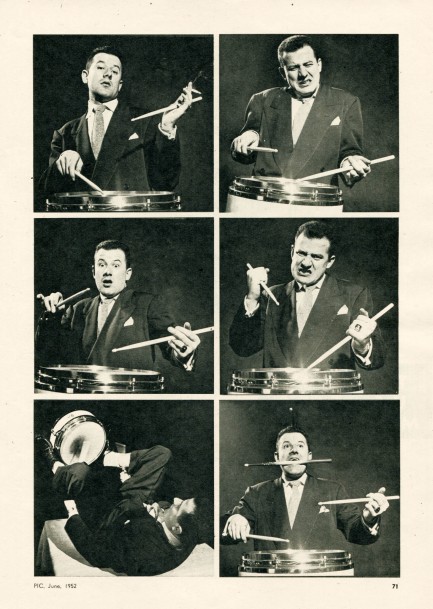
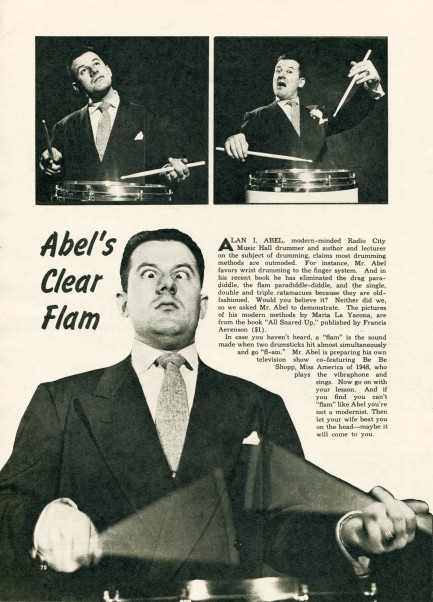
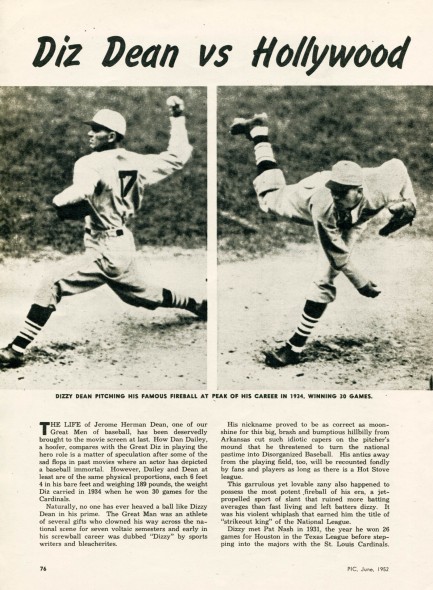
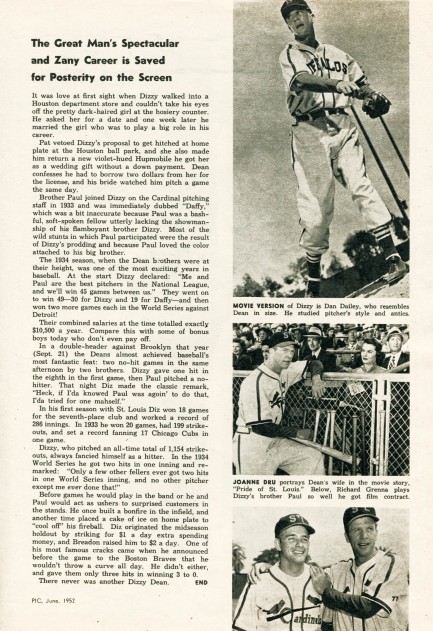
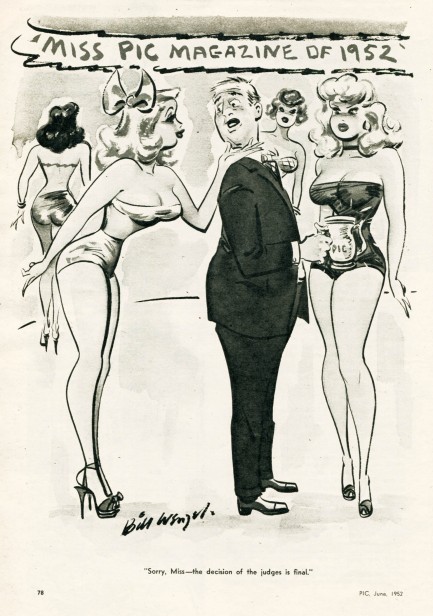
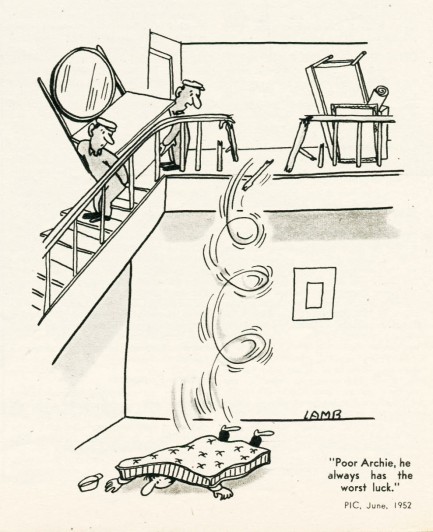

| Vintage Pulp | Feb 24 2011 |

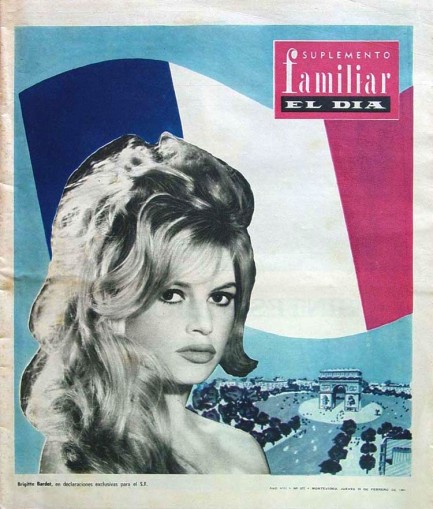
As long as we’re on anniversaries, here’s another piece of rare memorabilia. This is the cover of a Wednesday supplement for the Uruguayan daily El Dia with Brigitte Bardot on the cover. El Dia was founded in 1886, and lasted until 1993. During those later years, it ran into problems with Uruguay's military dictatorship, as well as competition from the rival daily El País. This issue, featuring Bardot at the height of her fame, was published today in 1962. And in case you missed it, we just did a detailed post on Bardot here.
| Vintage Pulp | Sep 16 2010 |

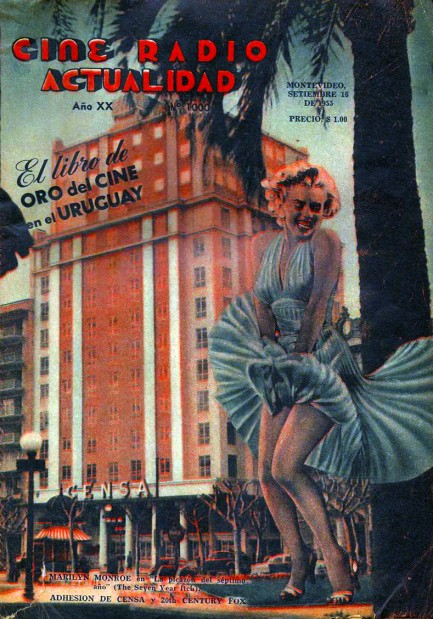
Above, a copy of the Uruguayan cinema magazine Cine Radio Actualidad, with a cover image of Marilyn Monroe in her famous Seven Year Itch pose. But since she was colorized and composited on a weird new background, she doesn’t look like she’s flirting with Tom Ewell so much as cringing away from a hot nuclear wind. Was that what the designers were going for? We doubt it. But sometimes you get lucky and end up with a great image anyway. This one hit newsstands today in 1955.
| Modern Pulp | Jan 17 2009 |

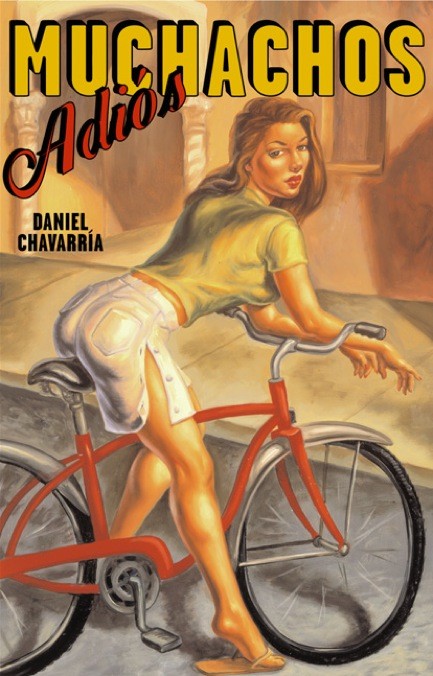
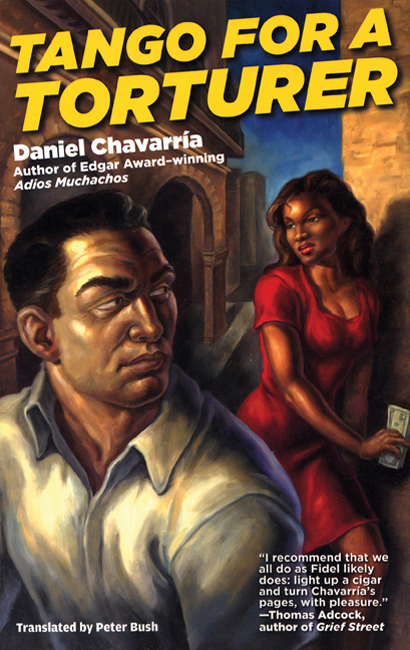
Uruguayan author Daniel Chavarría was a miner, a model, and a museum guide, before landing in Cuba and launching a literary career. He’s since won the Dashiell Hammett Award for his novel Gijón and the Edgar Award for Adios Muchachos. His fiction is political, comical, and suspenseful, but most of all it is palpably tropical, the product of a languid and overheated island where material riches are few but passions run high. Read Chavarría and you’ll immediately perceive the difference between fiction written by foreign authors who maybe spend six weeks in Cuba, and a man who has lived there for decades and calls it home. For instance, what foreign author could hope to explain the concept of bicycle hookers, and all the subtleties associated with their trade? Chavarría does exactly that in Adios Muchachos. In fact, he writes primarily about hookers. They’re his obsession, his muses, and he depicts them both unflinchingly and reverently. We won’t tell you more—except that we very much enjoyed the above two books. The English versions commissioned from Carloz Lopez and the award winning translator Peter Bush have all the flavor of the originals. And as a bonus, illustrator Owen Smith’s cover paintings serve as perfect encapsulations of the strange, dark beauty of Chavarría’s prose. More on Smith later.




































































